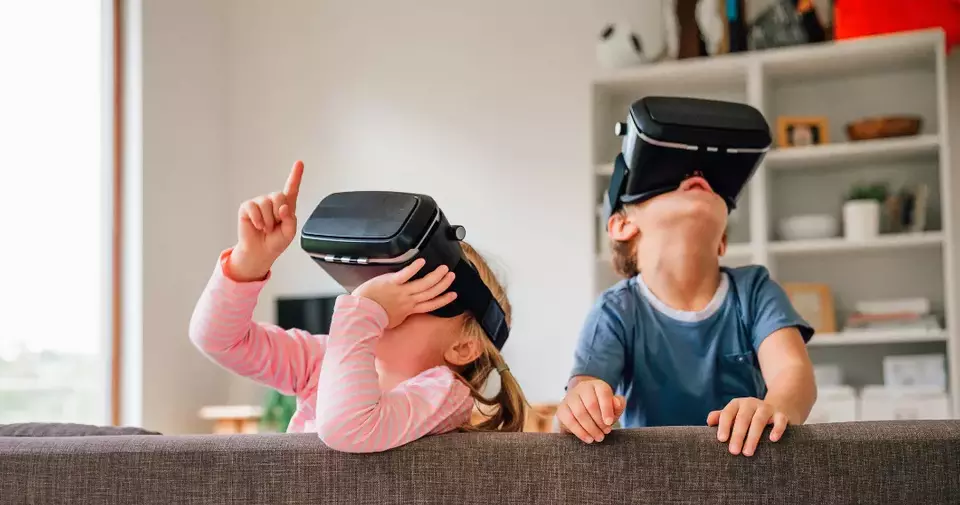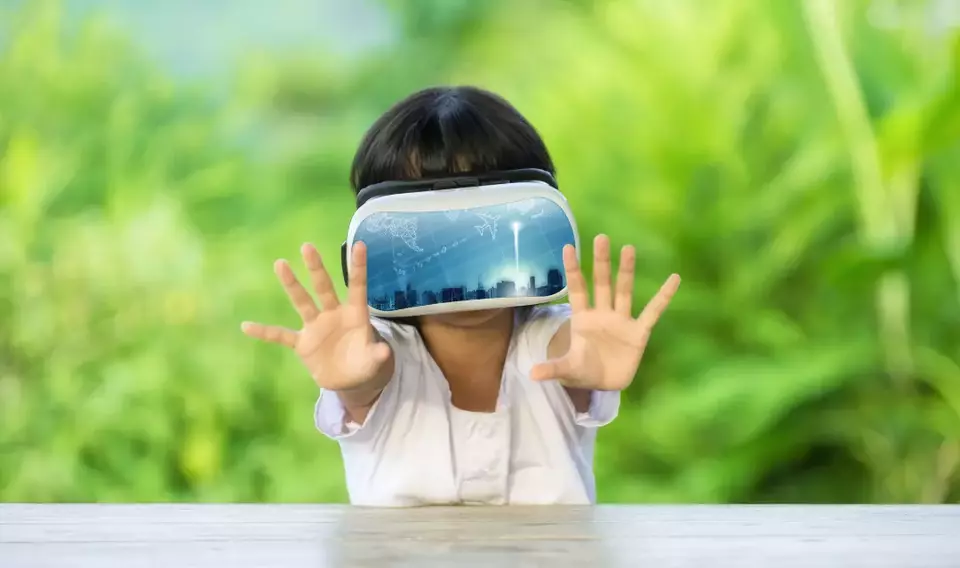Disadvantages of Virtual Reality (VR)
Posted on September 14, 2023 17 minutes 3519 words
Table of contents
Introduction
In the ever-evolving world of technology, Virtual Reality (VR) has emerged as a frontier that promises to revolutionize our interaction with the digital realm. To truly grasp the nuances and implications of this technology, it is essential first to understand what VR is, its soaring popularity, and the vast applications that it offers across various fields.
What is Virtual Reality?
Virtual Reality, commonly abbreviated as VR, is a technology that allows users to immerse themselves in a simulated, three-dimensional environment. Unlike traditional screen experiences, where users view a representation of a world, VR places users directly inside a virtual space, often giving them the ability to interact with the surroundings in real-time. This is achieved through a combination of hardware (like VR headsets and hand controllers) and software that creates and renders the virtual environments. VR strives to engage all senses including sight, sound, and sometimes even touch, crafting a convincing illusion of reality, where boundaries between the physical and the digital world blur.
The Meteoric Rise in the Popularity of VR
The inception of VR can be traced back to the mid-20th century; however, it has witnessed an exponential surge in popularity in recent years. Advances in technology have facilitated the development of VR devices that are more accessible and affordable, thereby reaching a wider audience. The current wave of VR popularity can be attributed to the immersive experiences it offers, which have gone beyond the realms of gaming, its initial stronghold. Industries and consumers alike are realizing the transformative potential of VR, fostering innovation and creating new avenues for interaction, entertainment, and business. Moreover, the COVID-19 pandemic accelerated the adoption of VR, as it emerged as a tool to bridge gaps in social interaction and professional collaborations that were limited due to social distancing measures.
A Spectrum of Applications Across Diverse Fields
Virtual Reality’s potential applications are vast and encompass a wide range of fields. In the educational sector, VR is being utilized to create interactive learning experiences, making subjects more engaging and easier to understand by allowing students to explore concepts in a three-dimensional space. The healthcare industry is another significant beneficiary, where VR is employed in various capacities such as pain management, virtual surgeries for training purposes, and therapy for PTSD patients.
The real estate sector uses VR for virtual property viewings, allowing potential buyers to explore properties from the comfort of their homes. Moreover, in the entertainment industry, VR is reshaping the way we consume content, offering immersive experiences in gaming and film. VR also finds applications in training and simulation programs, providing a risk-free and cost-effective solution for training in various professions, including military, aviation, and industrial jobs.
Furthermore, businesses are leveraging VR for product design and prototyping, where developers can visualize and modify products in a virtual environment before actual production, saving time and resources. It’s also carving a niche in tourism, where it offers virtual tours, allowing individuals to explore destinations virtually before planning their visit.
In conclusion, Virtual Reality stands as a testament to human innovation, weaving the digital and physical realms closer than ever before. Its widespread applications and growing popularity herald a future where VR becomes an intrinsic part of our daily lives, revolutionizing how we work, learn, and entertain ourselves.

1.Health Concerns
While Virtual Reality offers immersive experiences that can enrich various aspects of our lives, it is important to address the associated health concerns that can potentially mar the user experience. In this section, we will explore the most common health issues that VR users may encounter, including motion sickness, eye strain and discomfort, and other physical health concerns.
1.1 Motion Sickness
Description of the Symptoms
Motion sickness, sometimes referred to as cybersickness when discussing VR, is a well-documented downside to the use of virtual reality platforms. Users experiencing motion sickness might display a range of symptoms including nausea, dizziness, headaches, and disorientation. This happens due to the disconnect between what the eyes perceive and what the body experiences, creating a sensory conflict that can result in discomfort or sickness.
Statistics or Studies Showcasing its Prevalence
According to various studies, the prevalence of motion sickness varies significantly among individuals. It is generally believed that about 25% to 40% of VR users experience some degree of motion sickness, especially in VR environments where the virtual movement is not perfectly synchronized with the physical movement. Women and individuals with a history of migraines or vestibular diseases seem to be more susceptible, according to research conducted by the University of Minnesota and published in the journal “Experimental Brain Research”.
1.2 Physical Health Issues
Discussing Possible Negative Impacts on Physical Health Such as Sedentary Behavior
Extended VR usage has also been linked to potential negative impacts on physical health. One of the primary concerns is the promotion of sedentary behavior, as many VR applications require minimal physical activity, encouraging users to remain in one place for extended periods. This lack of movement can contribute to a range of health issues, including obesity, cardiovascular diseases, and muscle atrophy.
Mention of VR-related Accidents
Apart from sedentary lifestyle concerns, VR usage sometimes involves risks of physical accidents. Users engrossed in a VR experience might lose awareness of their real-world surroundings, leading to trips, falls, or collisions with objects around them. A few cases have been reported where users sustained injuries ranging from minor bruises to more severe accidents, emphasizing the need for creating a safe and spacious environment while using VR.
1.3 Eye Strain and Discomfort
Detailing How Prolonged Usage Can Lead to Eye Strain
Another significant concern with VR usage is eye strain and discomfort, which tends to manifest during or after prolonged sessions. This occurs because the eyes are constantly adjusting to the bright screens positioned very close to the face, which can cause fatigue over time. Additionally, the 3D imagery often demands a lot of effort from the eyes to focus and coordinate, which can exacerbate eye strain.
Suggestions on How to Mitigate this Issue
To mitigate the risk of eye strain, it’s advisable to take regular breaks from VR sessions, ideally every 30 minutes to an hour, to give your eyes time to rest. Furthermore, adjusting the brightness settings of the VR headset to a comfortable level and ensuring the headset is correctly positioned can help reduce strain. Users might also consider eye exercises to relieve eye muscles and prevent discomfort.
Conclusion
While VR opens doors to immersive experiences, it brings along a set of health concerns that users need to be mindful of. By being aware of potential health issues and adopting strategies to mitigate them, users can ensure a safer and more enjoyable VR experience.
2. Psychological Aspects
The integration of Virtual Reality (VR) into various facets of our lives is not without its psychological repercussions. This section delves into the deeper psychological aspects of VR usage, exploring the potential for addiction and escapism, as well as the impact on social skills.
2.1. Addiction and Escapism
Exploring the Potential for VR Addiction
In the context of Virtual Reality, addiction isn’t merely a conjecture but a burgeoning concern. The immersive nature of VR, which often provides exhilarating experiences far removed from the mundane realities of everyday life, has the potential to foster addictive behaviors. Individuals might find themselves spending an increasing amount of time in the virtual world, chasing the euphoria and excitement it offers. The novelty and the extensive range of experiences that VR offers can create a dependence, with users continually seeking more time immersed in these virtual environments. This dependency can, over time, evolve into a form of addiction, where users find it difficult to detach themselves from the virtual world, adversely affecting their personal and professional lives.
Addressing Concerns Regarding Escapism
Closely tied to addiction is the concern of escapism. VR offers an avenue for individuals to escape the pressures and stresses of real life, immersing themselves in a virtual universe where the boundaries are limited only by the imagination. While escapism in moderation can serve as a healthy coping mechanism, an overreliance on VR as an escape route can potentially lead to the neglect of real-life responsibilities and relationships. It is essential to foster a balanced approach to VR usage, where individuals can enjoy the benefits it offers without succumbing to the lure of continual escape from reality.
2.2 Impact on Social Skills
Discussing How Excessive Use of VR Can Hinder the Development of Social Skills
Another significant concern revolves around the impact of VR on social skills, particularly among the younger generation. Extended periods immersed in a virtual environment can potentially hinder the development of vital social skills. In the virtual realm, interactions are often stripped of non-verbal cues and nuanced human expressions that are integral to effective communication and relationship-building in the real world. Moreover, excessive VR usage can foster isolation, as individuals might opt for virtual interactions over real-life engagements.
Examples of VR Isolating Individuals from Real-Life Interactions
Several instances highlight the isolating nature of VR. Individuals engrossed in virtual worlds might find themselves gradually withdrawing from family gatherings, social outings, or other real-life interactions, favoring the solitary confinement of their VR headsets. There have been cases where individuals have reported feelings of loneliness and depression, stemming from prolonged periods of isolation brought about by excessive VR usage. The concern here is that virtual interactions might gradually replace the depth and richness of real-life relationships, leading to an increasing number of individuals experiencing social isolation and related psychological issues.

Conclusion
As VR continues to permeate our lives, it is imperative to navigate its use with caution and awareness. Understanding and acknowledging the potential psychological repercussions is the first step towards fostering a balanced and healthy relationship with this groundbreaking technology. As users, maintaining a clear boundary between the virtual and the real, and fostering genuine human connections outside the virtual realm, can go a long way in ensuring that we reap the benefits of VR without succumbing to its potential downsides.
3. Technological Limitations
While Virtual Reality (VR) stands as a beacon of technological advancement, offering immersive experiences unparalleled by other mediums, it is not devoid of limitations. This section critically examines the technological boundaries that VR currently contends with, encompassing high costs, prevalent technical glitches, and constraints concerning content quality and depth.
3.1 High Costs
Analysis of the Costs Associated with VR Technology
The financial aspect of VR cannot be understated, as acquiring and maintaining a VR setup demands a significant investment. To enjoy the best VR experience, users often have to procure high-end headsets, which are accompanied by powerful computing systems capable of running intricate VR programs. Apart from the hardware, there is also a continual expenditure on acquiring new content, which comes with its own set of costs. Moreover, the need for regular updates and maintenance adds to the financial burden. All these factors contribute to making VR a relatively expensive technology, sometimes beyond the reach of average consumers.
Mention of Ongoing Efforts to Make VR More Affordable
Despite the high costs, it is heartening to note that there are ongoing efforts to democratize VR technology. Companies are investing in research and development to create cost-effective VR solutions. Initiatives are underway to develop affordable VR headsets that do not compromise on quality, along with attempts to integrate VR capabilities into more budget-friendly devices like smartphones. Collaborative efforts within the industry aim to foster innovation and drive down costs, making VR accessible to a broader audience in the near future.
3.2 Technical Issues and Glitches
Detailing Common Technical Issues Like Lag, Glitches, Etc.
Even with advanced technology, VR is not immune to technical hitches. Users often report issues like lag, which refers to a delay between the user’s actions and the system’s response. This lag can severely hamper the immersive experience that VR strives to offer. Additionally, glitches such as software crashes, graphical errors, and tracking errors can disrupt the seamless VR experience, pulling users abruptly back into reality and sometimes causing discomfort or even sickness.
Discussion on the Current Limitations of VR Technology
Despite strides in development, VR technology is yet to reach its pinnacle. Current VR setups are often tethered, limiting the user’s movement and hampering the immersive experience. Additionally, the technology still struggles with rendering ultra-realistic environments and simulating complex physical interactions, leaving a gap between the virtual and the real world. The challenge lies in overcoming these barriers to create a truly immersive and glitch-free experience that can cater to a diverse range of applications, from gaming to professional training.
3.3 Content Quality and Limitations
Evaluation of the Current State of VR Content
While VR content has certainly evolved over the years, offering more diverse and complex experiences, it still faces criticism regarding its quality and depth. Many VR experiences available today focus on visual and auditory immersion, neglecting other sensory inputs which are crucial for a full-bodied experience. Moreover, a significant portion of VR content remains gaming-centric, limiting its appeal to non-gaming audiences.
Discussion on the Limitations in Terms of Realism and Depth of VR Experiences
In terms of realism and depth, current VR experiences still have a long way to go. Many experiences fall short of providing a truly lifelike immersion due to limitations in graphical fidelity, spatial audio accuracy, and haptic feedback. These limitations curb the potential of VR to offer deep, meaningful, and realistic experiences that resonate on a profound level with users. Moreover, the creation of high-quality VR content is both time-consuming and financially demanding, slowing the pace of advancements in this sector.
Conclusion
As we stand on the cusp of a VR revolution, it is vital to acknowledge and address the current technological limitations that hinder the full realization of VR’s potential. By focusing on reducing costs, ironing out technical glitches, and enhancing content quality and depth, the industry can pave the way for a future where VR experiences are not only immersive but also accessible, rich, and deeply gratifying.
4. Ethical and Privacy Concerns
As Virtual Reality (VR) technology matures and integrates more deeply into various sectors of society, it inadvertently brings to the fore a host of ethical and privacy concerns. This section takes a close look at the potential risks surrounding data privacy and the ethical dilemmas that emerge in the VR domain, providing an insight into the current discussions and suggested preventative measures.
4.1 Data Privacy
Discussing Potential Risks Associated with Data Collection in VR Environments
In the world of VR, data collection extends beyond the traditional parameters of personal information and browsing habits. VR platforms can potentially gather intricate data on user behavior, movements, and interactions within the virtual space. This includes tracking eye movements, facial expressions, and even the nuances of body language, which could be used to create detailed profiles of individuals. The collection of such sensitive data poses a significant risk, as it could be exploited for targeted advertising, surveillance, or even malicious intents like identity theft.
Moreover, with VR often being integrated with social media platforms and other online services, the potential for data mishandling or leaks increases substantially. This brings forth pressing concerns regarding the safety and privacy of user data, raising questions about the responsibility and accountability of VR platform providers in managing and protecting user information.
Suggestions for Safeguarding User Privacy
To safeguard user privacy, it is vital to implement stringent data protection policies and practices in the VR industry. This could include encrypted data storage, robust security protocols to prevent unauthorized access, and clear, transparent privacy policies that inform users about the nature of data collection and its usage. Furthermore, users should be granted greater control over their data, with options to opt-out of data collection or to limit the extent of data sharing. Regulatory bodies could also play a significant role in overseeing and enforcing data protection measures, ensuring that VR companies adhere to ethical data handling practices.
4.2 Ethical Dilemmas
Analysis of Potential Ethical Issues Surrounding VR
The realm of VR opens up a Pandora’s box of ethical dilemmas, ranging from the creation and consumption of content to the potential psychological impacts it might harbor. One of the pressing concerns is the propagation of hyper-realistic violent or inappropriate content, which might have adverse effects on users, particularly the younger audience. Furthermore, the potential for VR to foster addictive behaviors, social isolation, and escapism, as discussed in earlier sections, constitutes a significant ethical concern.
Moreover, the immersion of VR blurs the line between reality and fiction, potentially manipulating users’ perceptions and emotions in unprecedented ways. The use of VR in fields like psychology and therapy, though promising, brings forth ethical quandaries regarding consent, misinformation, and the potential misuse of technology.
Mention of Ongoing Discussions in the VR Community Regarding Ethical Guidelines
Acknowledging these challenges, there are ongoing discussions in the VR community aiming to establish a framework of ethical guidelines. These discussions involve academics, industry stakeholders, and users collaborating to explore the responsible development and deployment of VR technology. Topics being debated encompass user consent, the moral implications of virtual actions, and the creation of safe and inclusive virtual spaces.
Furthermore, there is a growing emphasis on fostering digital literacy, where users are educated on the potential risks and responsible usage of VR technology. By nurturing an ecosystem where ethics and responsibility are at the forefront, the VR community aims to pave the way for a future where VR can thrive without compromising the well-being and privacy of its users.
Conclusion
As VR technology evolves, it brings to the surface complex ethical and privacy concerns that demand careful consideration and proactive measures. By fostering open dialogue, promoting user awareness, and implementing robust data protection protocols, the VR industry can navigate these challenges, ensuring a future where VR serves as a tool for enrichment, without undermining the privacy and ethical foundations of society.
Conclusion
As we traverse deeper into the digital age, the proliferation of Virtual Reality (VR) technology stands as a testament to the unprecedented strides in innovation that humanity has achieved. While VR promises a future enriched with immersive experiences, bridging gaps between reality and the virtual realms, it also brings to light a series of disadvantages that warrant close scrutiny and proactive measures. This discourse has delved into several facets of these disadvantages, ranging from health concerns to technological limitations, and the ethical and privacy quandaries that emerge in the VR landscape.
The journey began with an insight into the health concerns, where the prevalence of motion sickness, eye strain, and physical health issues were brought to the fore. It is essential that users are made aware of these potential health risks, and strategies are developed to mitigate them, thus fostering a safer VR environment. Following this, we navigated the complex waters of the psychological aspects associated with VR. The potential for addiction and escapism, coupled with the impact on social skills, stood as noteworthy concerns. It becomes imperative to strike a balance, fostering healthy engagement with VR technologies without overshadowing real-life interactions and responsibilities.
Further, we ventured into an analysis of the current technological limitations plaguing VR. The high costs, technical glitches, and content limitations not only serve as barriers to mass adoption but also restrict the potential depth and realism that VR experiences can offer. Addressing these limitations stands as a vital step in realizing the full potential of VR, making it accessible and enriching for a broader audience. Moreover, we delved deeply into the ethical and privacy concerns, highlighting the pressing issues surrounding data privacy and the ethical dilemmas that are intrinsic to the VR domain. As VR continues to evolve, safeguarding user data and establishing ethical guidelines emerge as critical endeavors, ensuring that the growth of VR technology does not compromise the moral and privacy standards of society.
As we stand at this juncture, it becomes increasingly clear that the road ahead demands concerted efforts from the VR community. It is not only about celebrating the marvels of VR but also about addressing the pressing concerns with responsibility and foresight. The VR community, which encompasses developers, users, and stakeholders, must come together to foster a landscape where innovation thrives alongside safety, ethics, and inclusivity.
Thus, this serves as a clarion call to the VR community - a call to action to work diligently towards mitigating these disadvantages. It beckons the community to engage in continuous dialogue, research, and collaboration, fostering a VR environment that is not only technologically advanced but also grounded in ethical practices and user well-being. By addressing these challenges head-on, we pave the path for a future where VR technology stands as a beacon of innovation, offering enriching experiences without compromising the multifaceted dimensions of human existence.
Through collective efforts, we can aspire to witness a future where VR technology melds seamlessly with our lives, fostering experiences that are immersive, enriching, and above all, responsible and safe. Together, we can work towards realizing the dream of a VR landscape that stands as a testament to human ingenuity, while honoring the principles of ethics, health, and wellbeing that form the bedrock of society.








